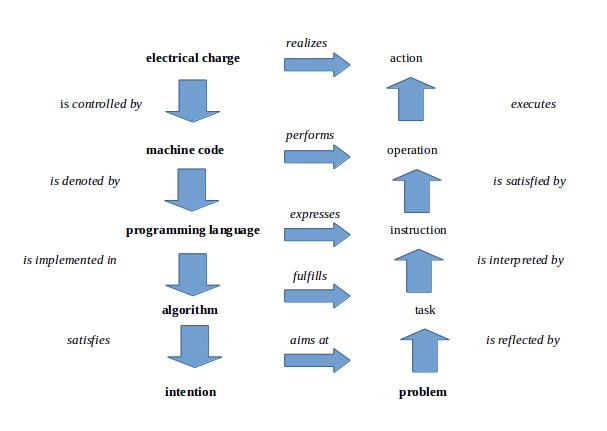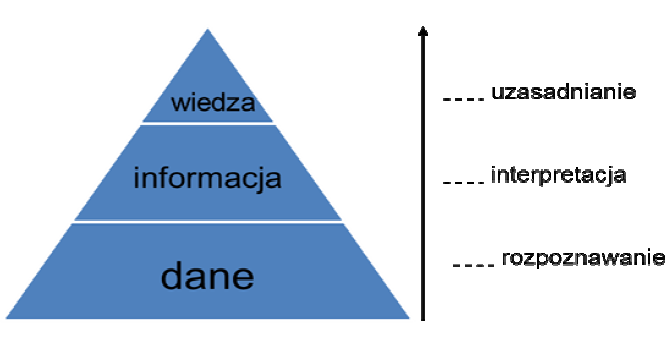I would like to invite everyone to discuss another text that has been submitted to the international workshop „Computational Modeling II” (organized in Cracow, on 11.03.2019, at the UPJPII University).
The whole text is available HERE.
The text, enriched with some new elements by Paula Quinon, is an extract from two articles by Paweł Stacewicz: 1) „On different meanings of analogicity in computer science” (already published in Polish, in the journal „Semina Scientiarium”), 2) „Analogicity in Computer Science. A Methodological Analysis” (submitted and currently reviewed in the journal „Studies in Logic, Grammar and Rhetoric”).
Therefore it is not a fully original work.
Nevertheless, we decided to submit it for discussion, because we are now working on a new publication devoted to analog/continuous computations, and all additional critical input, and each additional discussion will be for us very precious.
Thus, we will be grateful for any comments that may contribute both: the improvement of the text no. 2 (which still is in the reviewing process), and the development of our new ideas.
To encourage you to read the whole text, we put two representative passages below:
Two basic (general) meanings of analogicity
Regardless of the (technical) aspect that is considered in contemporary computer science there exist two different (yet not necessarily separate) ways of understanding analogicity.
The first meaning, we shall call it AN-A, refers to the concept of analogy. It acknowledges that analog computations are based on natural analogies and consist in the realisation of natural processes which, in the light of defined natural theory (for example physical or biological), correspond to some mathematical operations. Metaphorically speaking, if we want to perform a mathematical operation with the use of a computational system, we should find in nature its natural analogon. It is assumed that such an analogon simply exists in nature and provides the high effectiveness of computations. The initial examples of AN-A techniques (that will be developed later) are: the calculation of quotient using the Ohm’s law (an illustrative example) or the integration of functions using physical integrators (a realistic example).
The second meaning, we shall call it AN-C, refers to the concept of continuity. Its essence is the generalisation (broadening) of digital methods in order to make not only discrete (especially binary) but also continuous data processing possible. On a mathematical level, these data correspond to real numbers from a certain continuum (for example, an interval of a form [0,1]), yet on a physical level – certain continuous measurable variables (for example, voltage or electric potentials).
In a short comment to this distinction, we would like to add that the meaning of AN-A has, on the one hand, a historical character because the techniques, called analog, which consisted in the use of specific physical processes to specific computations, were applied mainly until the 1960s. On the other hand, it looks ahead to the future – towards computations of a new type that are more and more often called natural (for example, quantum or computations that use DNA). The meaning of AN-C, by contrast, is more related to mathematical theories of data processing (the theoretical aspect of computations) than to their physical realisations. Perhaps, it is solely a theoretical meaning that, in practice, is reduced to discreteness/digitality (wedevelop this subject in section 2.2) due to physical features of data carriers.
Additionally, it is important to note that analogousness does not exclude continuity. This means that both continuous and discrete signals can be processed as analogons. Therefore, the above-differentiated meanings are not completely opposed.
The physical realisation of continuous (hyper)computations
Another methodological issue is related to analog computations in the sense of AN-C, that is continuous. Theoretical analyses indicate that computations of this type – described, for example, with the use of a model of recursive real-valued functions – have the status of hypercomputations. This means that they allow solving problems that are out of reach for digital techniques which are formally expressed by the model of universal Turing machine. One of such problems is the issue of solvability of diophantine equations.
Although the theory of continuous computations does predict that they have higher computational power than digital techniques, the important question about practical implementability of continuous computations arises. That is to say: if the physical world, the source of real data carriers and processes to process data, was discrete (quantised), we would never be able to perform any analog-continuous computations.
The question about the separateness of the mind (or even the mind-brain understood as a biological system) from the physical world, to which real digital automaton belong, is related to this issue. Perhaps the fact that the mind’s computational power is higher than the power of digital machines – which, according to some people, is proven by the observed ability of the mind to solve intuitively difficult mathematical problems – can be justified with the continuity of mental sphere (or even the continuity of nervous system).
Once again, we invite everyone to discuss our text — Paula Quinon & Paweł Stacewicz.


